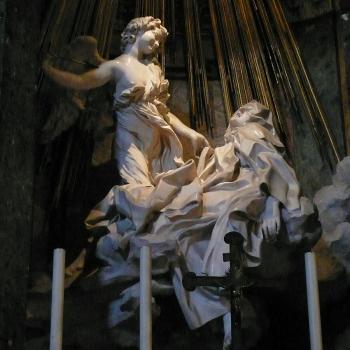for AmCon:
Leave it to the Nazis to make charity posters into advertisements for power-worship.
In the late 1930s the Nazi regime created a traveling exhibition which contrasted Fuhrer-approved artworks with “degenerate” works produced by modernists, New Objectivists, and other riffraff. The exhibition was a bizarre contrast to the book-burning and art-destroying we might expect from a totalitarian regime. Instead of preventing people from seeing the art at all, the Nazis encouraged them to view it—but sought to control the viewers’ responses by creating a context in which the displayed art would evoke revulsion or consternation. The totalitarian art was displayed with plenty of light and space, centered in the galleries or on the walls, while the “degenerate” art was crammed together and surrounded by graffiti-like reminders of the regime’s aesthetic judgments. The current show at New York’s Neue Galerie, “Degenerate Art: The Attack on Modern Art in Nazi Germany, 1937,” showing through June 30, doesn’t completely replicate this heavy-handed curatorial approach, but it gives enough hints (and striking photos of the Nazi shows) that viewers can get the point.
And what’s perhaps surprising is how much you really can learn about Nazism from this art show. There are pieces which would puzzle contemporary viewers who aren’t steeped in the arguments over abstract expressionism and ideology: What’s so threatening about a sleek Bauhaus armchair? What did Vasily Kandinsky’s interstellar circles ever do to Hitler? But the overall picture which emerges from the Neue Galerie’s show is of a regime which worshiped strength and hated weakness. Although the Nazis reviled artists for “mocking religion,” the religion most clearly displayed in their preferred artworks was not the cult of Jesus but of Mars.











